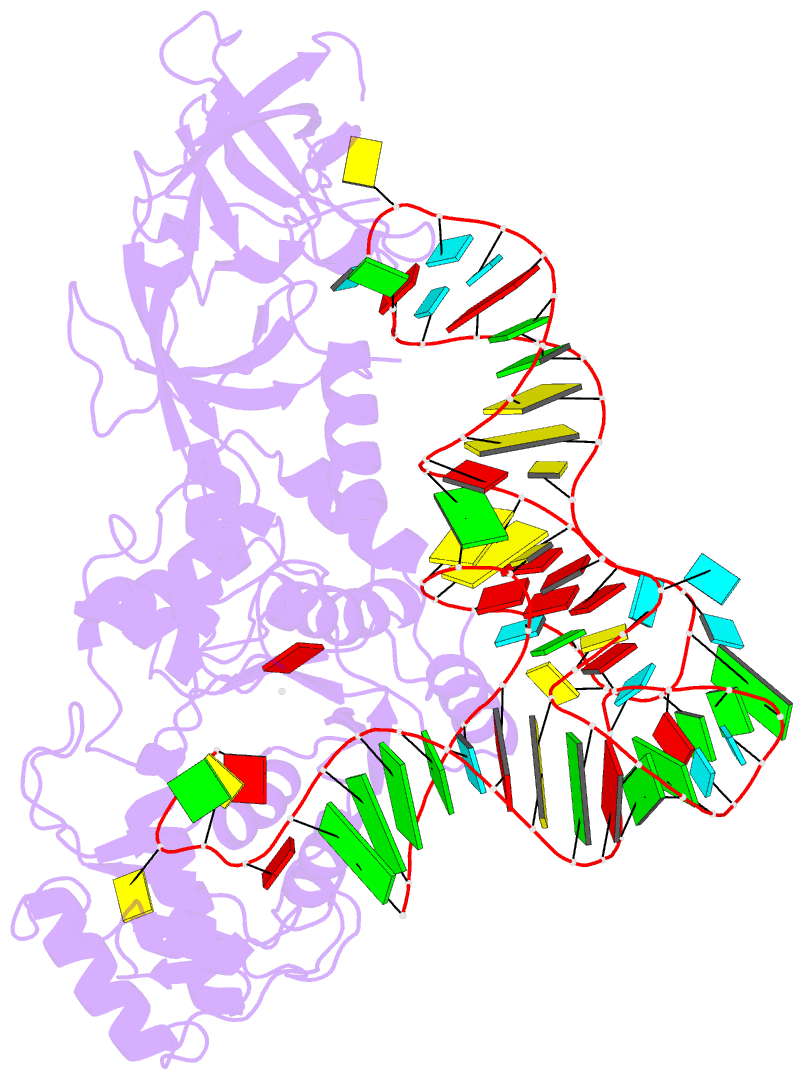Summary information and primary citation
- PDB-id
- 1gts; SNAP-derived features in text and JSON formats;
DNAproDB
- Class
- ligase-RNA
- Method
- X-ray (2.8 Å)
- Summary
- Structural basis for transfer RNA aminoaceylation by escherichia coli glutaminyl-trna synthetase
- Reference
- Perona JJ, Rould MA, Steitz TA (1993): "Structural basis for transfer RNA aminoacylation by Escherichia coli glutaminyl-tRNA synthetase." Biochemistry, 32, 8758-8771. doi: 10.1021/bi00085a006.
- Abstract
- The structure of Escherichia coli glutaminyl-tRNA synthetase complexed with tRNA2Gln and ATP refined at 2.5-A resolution reveals structural details of the catalytic center and allows description of the specific roles of individual amino acid residues in substrate binding and catalysis. The reactive moieties of the ATP and tRNA substrates are positioned within hydrogen-bonding distance of each other. Model-building has been used to position the glutamine substrate in an adjacent cavity with its reactive carboxylate adjacent to the alpha-phosphate of ATP; the interactions of the carboxyamide side chain suggest a structural rationale for the way in which the enzyme discriminates against glutamate. The binding site for a manganese ion has also been identified bridging the beta- and gamma-phosphates of the ATP. The well-known HIGH and KMSKS sequence motifs interact directly with each other as well as with the ATP, providing a structural rationale for their simultaneous conservation in all class I synthetases. The KMSKS loop adopts a well-ordered and catalytically productive conformation as a consequence of interactions made with the proximal beta-barrel domain. While there are no protein side chains near the reaction site that might function in acid-base catalysis, the side chains of two residues, His43 and Lys270, are positioned to assist in stabilizing the expected pentacovalent intermediate at the alpha-phosphate. Transfer of glutamine to the 3'-terminal tRNA ribose may well proceed by intramolecular catalysis involving proton abstraction by a phosphate oxygen atom of glutaminyl adenylate. Catalytic competence of the crystalline enzyme is directly shown by its ability to hydrolyze ATP and release pyrophosphate when crystals of the ternary complex are soaked in mother liquor containing glutamine.





